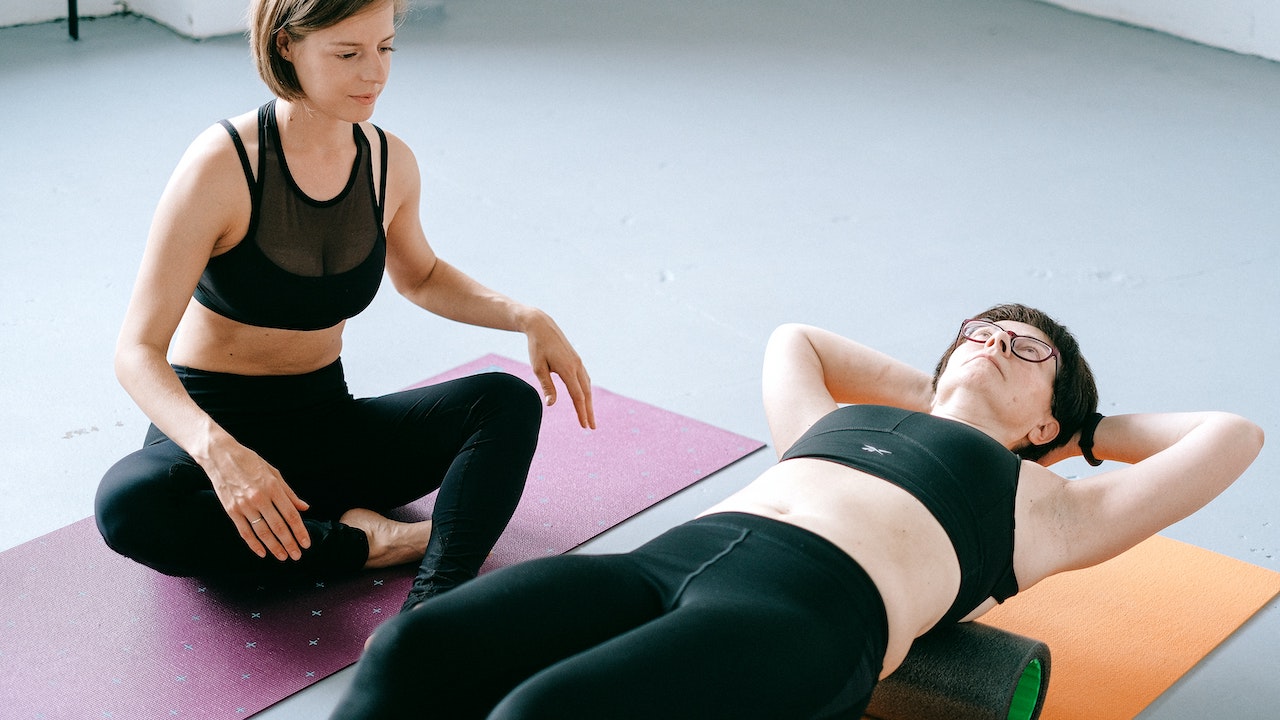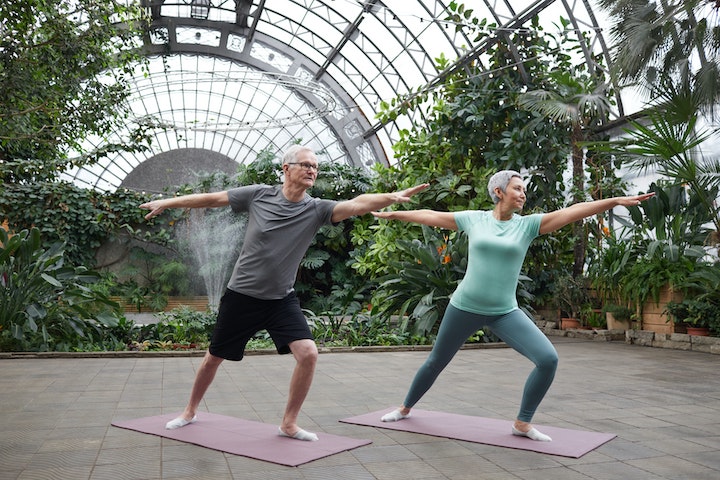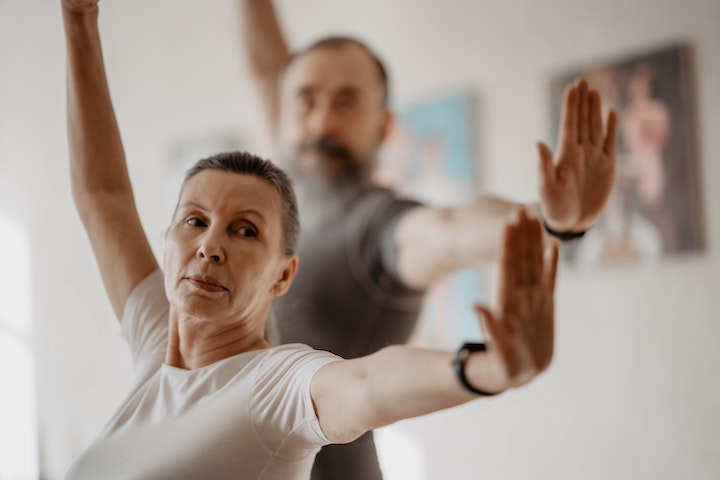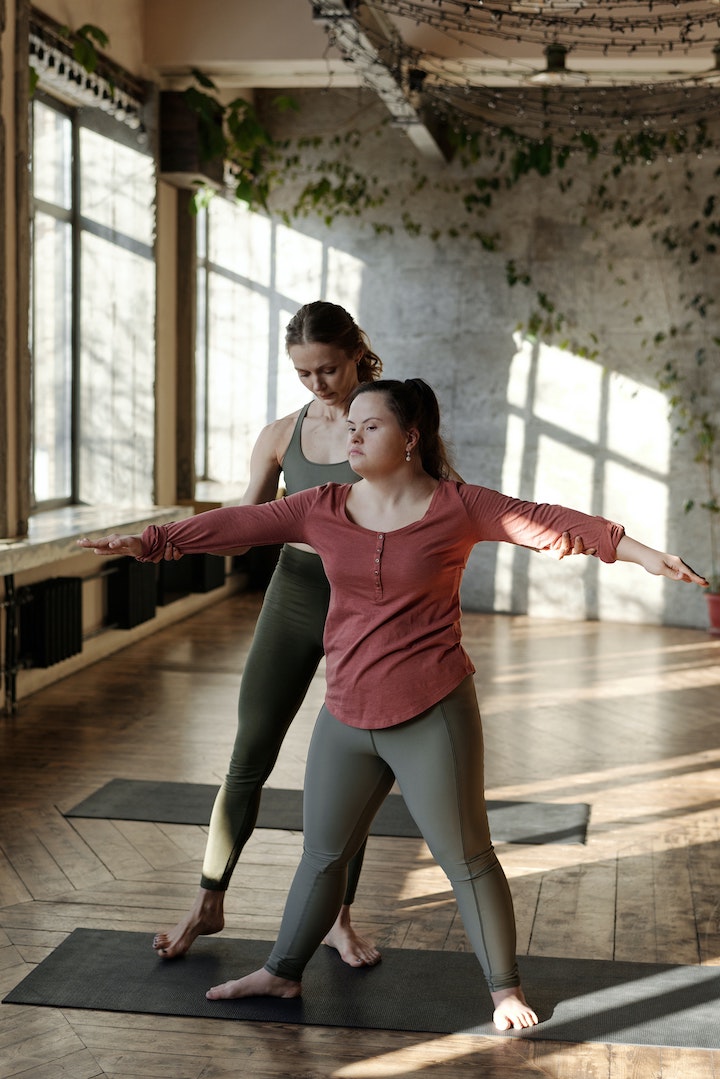

Balance training is an important aspect of physical therapy that helps patients improve their mobility and strength. It can help reduce the risk of falls, improve posture, and promote overall well-being.
In this article, we’ll discuss the different types of balance training available to physical therapy patients, as well as the importance of progression when incorporating these exercises into your treatment program.
We’ll also take a look at what role a physical therapist plays in helping you get the most out of balance training and how it can be used to increase your quality of life.
So let’s dive right into the importance of balance training in physical therapy!
Physical rehab involves working on strength, range of motion, and coordination to help patients improve their mobility. Exercise programs tailored to each patient’s individual needs are an essential part of physical therapy as they work toward achieving their therapy goals. Here’s a comprehensive guide to Physiotherapy.
Balance training is one of the most important components of physical therapy as it helps build strength, stability, balance and proprioception — all of which are necessary for proper movement and function in activities. It can include a variety of exercises that involve standing or sitting on unstable surfaces such as foam pads or BOSU balls. By challenging the body with this type of exercise, it forces the core muscles to contract and engage in order to maintain balance.
Balance training also involves visual tracking exercises that require you to move your eyes while keeping your head stable as well as dual-tasking exercises where you may be asked to perform a series of activities while maintaining good posture and balance. Additionally, balance training may involve cognitive challenges such as counting backwards or repeating words while balancing in different positions.
All these activities create greater awareness of how your body moves through space which is essential when recovering from injuries or illnesses that limit mobility.
Have you ever considered the benefits of balance training? It is an important part of physical therapy and can help improve mobility, coordination, muscle strength, and posture, reduce falls and even pain. It’s a great way to stay in shape and keep active!
By regularly doing balance exercises, you can drastically improve your mobility and get to places faster than ever before. It can help you increase proprioceptive awareness, improve mental focus, and reduce the risk of injuries.
 Photo Credit: Andrea Piacquadio
Photo Credit: Andrea Piacquadio
As you practice balance training regularly, your body develops better reflexes and coordination that allow for quicker movements and more accurate responses. This means that when it comes time to move quickly or react to something on the spot, your body is ready and able to do so.
With improved mobility from balance training, you can find yourself possessing greater agility as well as being able to change direction easily without losing your footing.
Regular balance exercises help hone your body’s coordination, allowing for smoother and more precise movements. Improved agility and increased stability are two of the most notable benefits associated with regular balance training. These skills can be essential in everyday activities such as walking, running, or even just standing up from a seated position.
It helps to develop the core muscles that provide support and assistance in movement, thus improving coordination and making sure you move confidently throughout life. Balancing on one foot or using a foam roller to increase stability can help you gain better control over your body’s movements. This can help reduce the risk of falls due to lack of balance while also providing a greater level of comfort when performing physical activity.
Regular practice can lead to improved proprioceptive awareness—the ability to sense where your body is in space—which will further contribute to enhanced agility and mobility. Balance exercises are an essential part of any physical therapy program since they have been proven time and again to improve overall coordination levels for both athletes and those recovering from an injury or surgery.
Regularly engaging in balance exercises not only enhances coordination but also strengthens the muscles involved in movement, providing greater stability and comfort. This increased strength can help prevent falls and reduce the risk of injuries due to muscle weakness or imbalance.
 Photo Credit: Marcus Aurelius
Photo Credit: Marcus Aurelius
Balance training helps improve muscle control throughout the body by increasing its ability to resist force from external sources. By doing so, it helps support healthy posture, reduces fatigue, and improves motor skills. Additionally, it can help with everyday tasks such as climbing stairs or carrying heavy objects.
It requires more than just strength; it also requires mental focus and concentration to maintain good posture while performing exercises like standing on one leg or walking on a balance beam. With regular practice, you’ll be able to become more aware of your body’s position while performing these activities, allowing you to make corrections when needed without losing your balance.
Ultimately, this improved awareness will lead to increased muscular strength that can provide greater comfort during daily activities and overall better health outcomes for physical therapy patients.
Improving your posture through balance training can help reduce fatigue and make everyday tasks easier for you. Proper alignment of the body is paramount to core stability, and good core stability is an integral part of good posture, helping you stay upright with less effort.
Additionally, balance training also helps improve your sensory awareness and coordination abilities so that you’re better able to detect any changes in your posture or positioning quickly. This means that even if you start to slump throughout the day, it’ll be easier for you to correct yourself before it becomes too uncomfortable or causes any further damage.
Learn everything there is to know about proper posture and its benefits in physical therapy.
Getting older can bring an increased risk of falls, but balance training can help you stay steady and prevent them. We’ve also dedicated an article on the benefits of physical therapy for the elderly; check out the importance of physiotherapy in geriatric care.
 Photo Credit: Mikhail Nilov
Photo Credit: Mikhail Nilov
Balance training, while focusing on improving your posture, is also a great way to help reduce the risks associated with falls. Here are some ways it can help:
It doesn’t just make walking easier; it makes everyday activities safer. By participating in balance training as part of physical therapy, you’ll be able to enjoy activities like gardening or going for a walk without worrying about slipping or tripping. Plus, learning how to use your core muscles for better posture means that you’ll look great too!
Balance exercises are a great way to reduce inflammation and muscle spasms, which can often be the cause of chronic pain. Through targeted movements that strengthen muscles, and improve coordination and flexibility, you can help alleviate painful symptoms and increase mobility.
By strengthening the core muscles around your hips, back, shoulders, knees and ankles you can decrease pain levels in these areas as well as prevent further injury or strain on the body.
Additionally, balance exercises help build endurance, enabling you to perform daily tasks with greater ease and less stress on joints such as hips or knees that may be prone to flare-ups.
With regular practice of balance techniques, you’ll find yourself able to move more freely with less discomfort – allowing for more enjoyable physical activities that don’t leave you feeling drained afterwards.
Let’s start by discussing the different types of balance training exercises.
First, let’s look at static balance exercises. These are exercises that improve a person’s ability to maintain their body position without movement for an extended period of time.
Next, we can talk about dynamic balance exercises, which teach you how to move your body while maintaining control and balance as you transition from one motion to another.
Both types of balance training are important components in physical therapy and overall fitness.
Strengthening your core and working on your stability can be a great way to improve your overall health! One type of balance training that physical therapists often use is static balance exercises.
 Photo Credit: Cliff Booth
Photo Credit: Cliff Booth
These exercises are designed to help improve functional stability, as well as proprioceptive awareness. Static balance exercises involve standing still in different positions for short periods of time while trying to maintain a stable centre of gravity.
It may sound easy, but it can be quite challenging! These exercises require the individual to engage their core muscles and focus on controlling their body’s movements.
By doing this regularly, patients can increase their strength and coordination while improving their overall balance. This will not only reduce the risk of falls and injuries but also lead to increased confidence in one’s own abilities.
Moving on from Static Balance Exercises, Dynamic Balance Exercises are an important part of physical therapy as well. You may have heard of them referred to as “functional stability exercises” and they are designed to help improve muscle activation and dynamic movements.
These exercises can help you to better respond to your environment while performing any type of physical activity or exercise, making them a key component in helping you reach your individualized goals in physical therapy.
Dynamic balance exercises involve shifting your weight and moving quickly through various positions. This helps activate multiple muscles at once which helps build strength, coordination, and overall balance throughout the entire body.
Examples of dynamic balance exercises include single-leg hops, lateral shuffles, skaters, side planks with leg lifts, and agility drills such as cones drills. All these exercises target specific muscle groups while also incorporating functional movement patterns that require stabilization from many other small muscles within the body for optimal performance.
By strengthening all these different muscles together it allows for improved motor control throughout the entire body which ultimately leads to better balance overall.
Balance training is essential to physical therapy, and there’s a variety of equipment out there that can help you get the job done! From simple foam pads and balance boards to more advanced tools like wobble cushions and BOSU balls, it’s easy to find something that works for your needs.
 Photo Credit: Jonathan Borba
Photo Credit: Jonathan Borba
Progression levels can be increased gradually with these items as well as with therapeutic exercises, making them great additions to any physical therapy program. Not only do they provide a safe environment for patients to progress in their strength and stability journey but also allow for individual customization of each exercise.
Depending on the patient’s goals and abilities, you can use various pieces of equipment in order to create a balanced workout plan tailored specifically for them. For example, some patients may benefit from using all sorts of tools while others may need just one or two pieces of equipment throughout their journey.
When considering balance training for a client, it’s important to take their age and health into account. For example, older clients may need to focus more on posture or gait while younger clients can work on more complex movements.
Additionally, the client’s current level of fitness should be taken into consideration when designing a balance training program; some clients may require more intensive exercises than others.
As you age, your body’s needs and abilities change rapidly, so understanding the impact of these shifts on your health is key to maintaining a healthy lifestyle.
Balance training is especially important for older clients as age-related changes to their muscles, bones and joints can make them more prone to falls and other injuries. Balance training helps by improving coordination, strength and flexibility, all of which are necessary for better balance.
When it comes to incorporating balance training into physical therapy sessions with older clients, it’s important to take into consideration any underlying health conditions or diseases that could affect their ability to perform certain activities.
For example, a client with Parkinson’s disease may require different exercises than someone who does not have the condition. Additionally, clients taking certain medications may need additional safety precautions or modifications in order to complete the exercise safely.
Taking the time to tailor the balance exercises specifically for each individual client will help ensure maximum benefit from their physical therapy sessions.
Now that we’ve discussed the importance of considering a client’s age and health when planning balance training for physical therapy, let’s take a look at their level of fitness.
 Photo Credit: Darina Belonogova
Photo Credit: Darina Belonogova
Before starting your plan, it’s important to assess the client’s current condition and fitness goals.
Here are some questions to consider:
Having an understanding of these factors will help you create an individualized fitness program tailored to meet each client’s unique needs and goals while still providing them with effective balance training exercises.
To ensure safety and prevent injury, it’s also important to continuously monitor your clients as they progress through the program and make adjustments accordingly if necessary. By doing this, you can ensure that your clients are actively engaging in physical activity safely while maximizing their potential for success!
Balancing exercises can be tricky, so it’s important to keep safety top of mind when doing them.
To ensure a safe and successful balance training session, start by focusing on your sensory awareness. By engaging your senses to feel connected with the ground and your body, you can reduce the risk of falls or injuries.
Also, incorporate stability drills into each training session. These drills help to improve muscle strength and coordination which are needed for balancing activities. They also help with overall body control and stabilization during each exercise so that you remain secure while in motion.
Overall, following these simple tips will help make sure you’re staying safe while performing balance exercises in physical therapy sessions.
With balance training, there are a variety of approaches one can take to achieve improved body control and coordination; in fact, it’s estimated that over one billion people around the world practice some sort of balancing exercise.
 Photo Credit: Li Sun
Photo Credit: Li Sun
Whether your goal is to increase mental focus, physical balance or proprioceptive awareness, there is a range of options available. Core strength and cardiovascular endurance can be built with high-intensity interval training sessions. Muscle activation drills such as squats or planks will also help improve your balance.
Therapeutic yoga combines stretching and breathing exercises to reduce tension while increasing flexibility and body mechanics. Similarly, Pilates has become a popular form of exercise for those looking to build their core stability while improving posture and overall body alignment.
With these different approaches, you can tailor your balance training program specifically to meet your needs.
Progression is key when it comes to improving your body control and coordination. Gradually increasing the difficulty of exercises over time will help you get the most out of your balance training.
When beginning a new training program, it’s important to start with an initial risk assessment. This helps ensure that any exercises you do are appropriate for your current fitness levels and that any underlying conditions don’t increase your risk of injury.
As you progress through the program, it’s also essential to continually adjust and increase the difficulty level of each exercise in order to maintain engagement and gain maximum benefit from the workout. By gradually pushing yourself further with each session, you’ll be able to make steady progress towards improved balance, stability, and coordination.
Now that you understand the importance of progression in balance training, let’s dive deeper into the role of physical therapists in this process.
As a physical therapist, it’s your responsibility to assess each patient’s individual needs and develop an appropriate plan for their balance training. To do so, you may use assessment techniques such as gait analysis and dynamic postural control tests to evaluate the patient’s current abilities.
From there, you can create a personalized program that fits the patient’s goals and objectives while helping them safely progress their skills over time.
In addition to assessing and creating a personalized program, it’s also important for physical therapists to monitor patient progress during training sessions. During these sessions, you should encourage patients to be proactive with their recovery by providing positive feedback and encouragement throughout.
You should also provide instruction on proper technique with exercises or activities that challenge the patient’s ability without putting them at risk for injury. By doing this, you will ensure that each session is effective in helping the patient reach their goals while staying safe throughout their journey towards improved balance and mobility.
To summarize, as a physical therapist, it’s your responsibility to assess each individual’s needs and create an appropriate program utilizing assessment techniques like gait analysis or dynamic postural control tests.
Additionally, during each session, it’s important to provide feedback on proper technique while encouraging patients with lots of positivity along the way!
Here are three key takeaways:
Crucial for overall well-being, balance training in physical therapy is like a light at the end of a tunnel that guides patients to improved mobility. Taking a holistic approach and focusing on wellness, physical therapists use balance training to improve stability and reduce the risk of falls.
Balance exercises are also used to improve coordination, posture, strength, and gait. These activities can help build muscle memory and increase awareness of body position and movements. With regular practice, patients can become more confident in their ability to move about without fear of falling or injury.
 Photo Credit: Kampus Production
Photo Credit: Kampus Production
Balance training offers many benefits that extend beyond physical health. It can help reduce stress levels in people with anxiety or depression by providing an outlet for releasing tension. It also encourages mindfulness as patients focus on their breath during exercises while being mindful of their body’s movements and alignment.
Patients may even find that they have more energy after engaging in balance training due to increased blood circulation throughout the body. Ultimately, this form of physical therapy helps individuals feel stronger both mentally and physically — making it an invaluable part of any rehabilitation program!
Balance training can be beneficial for all ages, from young children to the elderly. It’s important to take preventative measures regarding your physical health and it is a great way to do that.
Personalized programs tailored to each individual’s needs can help individuals of any age improve their overall balance. Balance training helps you stay active, keep moving, and reduce your risk of injury and falls as you age.
You may think that balance training is just a passing fad, but its long-term effects are actually quite impressive!
By incorporating exercise variations into your balance training routine, you’re not only giving yourself the opportunity for improved balance and coordination – you’re also helping to prevent falls in the future.
You’ll be grateful that you took the time to invest in your balance training now when you’re still young and agile; fall prevention can be critical later in life.
You don’t need to be a physical therapy patient to benefit from balance training! Balance exercises can help athletes improve their performance and prevent injury. Studies have shown that regularly practising balance exercises can increase agility, coordination, and reaction times – all essential elements of success in any sport.
Furthermore, by improving your body’s sense of stability and awareness of where it is in space, you’re less likely to suffer an injury due to sudden movements or falls.
You may be well aware of the benefits of balance training, such as improved coordination and increased stability. But have you considered the risks?
Stability aids are often used for balance training, but if not used correctly, they can result in a greater risk of falls and other injuries – an unexpected anachronism. You must make sure to use proper form when engaging in balance exercises with stability aids to ensure that there is no additional fall prevention risk.
The key is to focus on stabilizing your body while also increasing your strength and agility. Be mindful of your form as you progress through each exercise so that you can maximize the benefit without risking injury.
You may be wondering how much balance training costs. Luckily, the cost of balance training varies depending on your needs and resources. Depending on the prevention strategies you’re looking to use, or the skill development you’re aiming for, there are a variety of options available that won’t break the bank.
Balance training is an important part of physical therapy, but it doesn’t have to cost a fortune. With some research and preparation, you can find a program that fits your budget while still providing quality care.
You’ve come to the end of your journey and seen just how important balance training is in physical therapy. You know that it can help improve strength, coordination, and overall stability—all essential components for living an active life.
But you also know that there are certain factors to consider when incorporating it into your routine and that progress should be made gradually and monitored closely by a physical therapist.
The irony? We often take our ability to stay balanced for granted until we lose it! Balance training reminds us of its importance while helping us get back on track if we ever find ourselves off-balance.
There are no results matching your search.
Reset